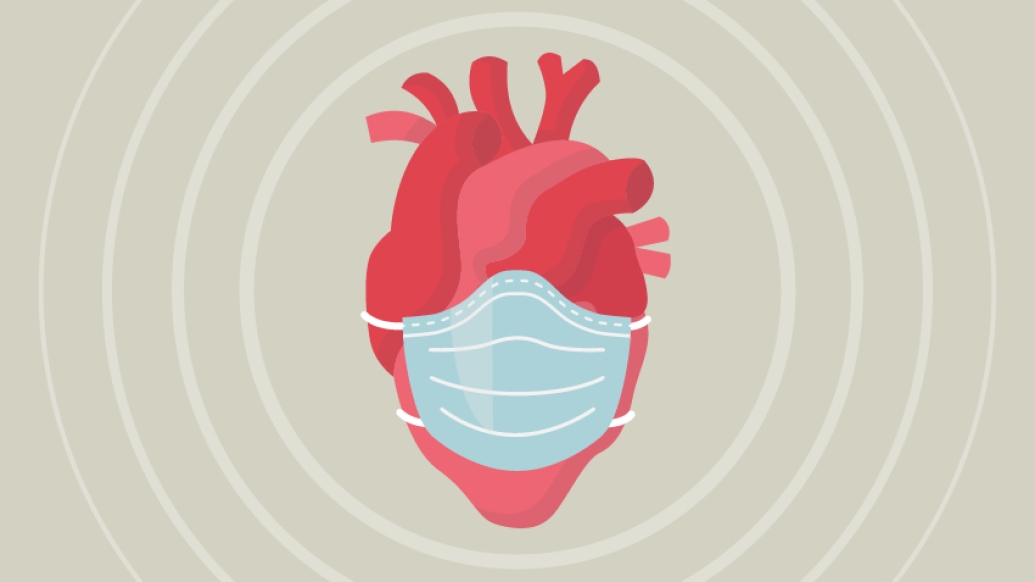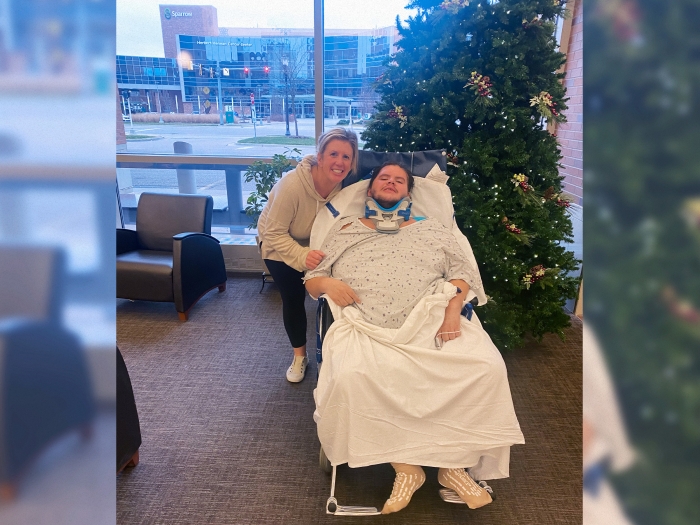A team of researchers are looking at all angles to figure out how to reduce the rates of health-care-associated infections for patients who get ventricular assist devices.
1:00 PM
Author |

Once used as a temporary helper while a person waited for a new heart, ventricular assist devices are now increasingly used as a long-term treatment.
This increase in destination therapy for advanced heart failure means another option is available to those who aren't candidates for transplant and need more than medication.
LISTEN UP: Add the new Michigan Medicine News Break to your Alexa-enabled device, or subscribe to our daily audio updates on iTunes, Google Play and Stitcher.
It also means a wider population of patients receive the implant surgeries.
Although the design of available VADs continues to improve — in part leading the Food and Drug Administration last year to approve a popular device for extended use — a significant problem persists after surgery.
"About 60 percent of VAD patients develop an infection within 90 days," says Donald Likosky, Ph.D., M.S., associate professor of cardiac surgery at the University of Michigan Frankel Cardiovascular Center. "VADs are lifesaving devices, but they come with a great deal of associated risk, including a 5.5-fold risk of one-year mortality after infection."
That's why Likosky is teaming up with a group of experts who bring their knowledge on infectious diseases, cardiac surgery, health services research, application of qualitative data and more to address this issue. The group plans to comb through clinical data and billing data and then conduct in-person interviews and site visits during the five-year study period.
The ultimate goal? To create a toolkit with evidence-based recommendations that all hospitals implanting ventricular assist devices will use to reduce the rates of health-care-associated infections for those patients.
U-M is the ideal center to figure out how to reduce infection in LVAD patients, Likosky says, because of the wide range of talent available for complex investigations.
"Because the goal isn't always transplant anymore, preventing infection is even more critical," says Preeti Malani, M.D., MSJ, another designer of this study and a professor of internal medicine at the U-M Medical School who specializes in infectious diseases and geriatrics. "We need to think about prevention in the short and the long term."
LVADs for advanced heart failure
Patients with advanced heart failure have very few treatment options to try to address their disease, says Likosky, also a member of U-M's Institute for Healthcare Policy & Innovation and head of cardiac surgery health services research and quality.
"Symptoms are not relieved with medication for a portion of patients with advanced heart failure," he says. "For these patients, estimated to be about 250,000 in the United States, they basically have two options: potentially a path to a transplant or having a VAD implanted," he says.
MORE FROM THE LAB: Subscribe to our weekly newsletter
LVADs pump blood from the left ventricle into the aorta, and they are connected to a driveline that extends outside the body to power them.
Although LVADs have been shown to improve survival and quality of life, related complications such as infection, pump thrombosis and gastrointestinal bleeding must be addressed, says Francis Pagani, M.D., Ph.D., a cardiac surgeon at U-M's Frankel Cardiovascular Center who also helped design this research.
At hundreds of thousands of dollars per patient, VAD therapy is also expensive — more so if an infection develops.
VADs are lifesaving devices, but they come with a great deal of associated risk, including a 5.5-fold risk of one-year mortality after infection.Donald Likosky, Ph.D., M.S.
Risks of long-term LVAD use
Widening the population for VAD implantation beyond those who are eligible for transplant has the potential to help 250,000 people whose advanced heart failure requires more than medication.
Despite the advantage of making VAD therapy an option for more people, this growing group of eligible patients may be older or saddled with more comorbidities than heart transplant candidates — the original recipients who relied on LVADs to bridge them to transplantation.
SEE ALSO: Minimally Invasive Procedure Increases Options for Mitral Valve Repair
And clinicians today are caring for people who are living more years with VAD devices than in the past.
"Because of the size and location of the device, when you have an infection it's not something that's simple to manage," says Malani, also a member of U-M's Institute for Healthcare Policy & Innovation. "It's problematic beyond a lot of device infections where you can remove the device more easily, like a pacemaker or a knee joint."
Solving infection rates of all types for people with ventricular assist devices may help hospitals care for other surgical patients, too.
"After major cardiac surgery in general, this population of patients is more ill and prone to more infections, like hospital-acquired pneumonia, urinary tract infections and blood stream infections," says Pagani, who implants LVADs.
Pagani has also served as an investigator for prominent national research on LVAD therapy, including the MOMENTUM 3 trial that led to FDA approval for destination therapy with the HeartMate3 device.
Finding insights in numbers and people
In order to design a toolkit that will work across all VAD therapy centers, the researchers need as much information as possible.
"We're the only place in the country that has both the billing data and the clinical data set, and thus the ability to merge them," Likosky says. "We're using our unique set of data to identify the high- and low-performing hospitals across the nation, and then we'll pack our bags and visit centers at both ends of the spectrum.
"We'll see what we can learn from the sites that have low infection rates by seeing what they're doing differently that the sites with higher infection rates are not."
The researchers will check out common assertions, including that centers with lower health-care-associated-infection rates select healthier patients, or that improved practices such as standardizing antimicrobial therapy or improving collaboration among a care team will have a stronger impact on infection rates.
The researchers will check out common assertions, including that centers with lower health-care-associated-infection rates select healthier patients, or that improved practices such as standardizing antimicrobial therapy or improving collaboration among a care team will have a stronger impact on infection rates.
"For this study we will use a mixed methods patient tracer approach," says Michael Fetters, M.D., a professor of family medicine at Michigan Medicine and a member of U-M IHPI, who also helped design this project. "We will follow the course of LVAD patients through the hospital system at all the stops the patient makes from entry to discharge. A unique mixed methods research approach, we use the numbers from quantitative outcomes data and survey data to inform qualitative interview questions. These interviews will bring a voice to staff and clinicians who care for LVAD patients throughout a hospitalization. This approach helps us learn more about context, how things happen and why specific things happen that could inform strategies for reducing infections."
The full research team includes Likosky, Malani, Pagani and Fetters, along with Keith Aaronson, M.D., James Bagian, M.D., P.E., Carol Chenoweth, M.D., John Hollingsworth, M.D., and Min Zhang, Ph.D., all from U-M; with Russell Funk, Ph.D., from the University of Minnesota Carlson School of Management.
"Disclosure: Pagani consults for L. VAD Technology, Inc."
The project is funded by the Agency for Healthcare Research and Quality.

Explore a variety of healthcare news & stories by visiting the Health Lab home page for more articles.

Department of Communication at Michigan Medicine
Want top health & research news weekly? Sign up for Health Lab’s newsletters today!





